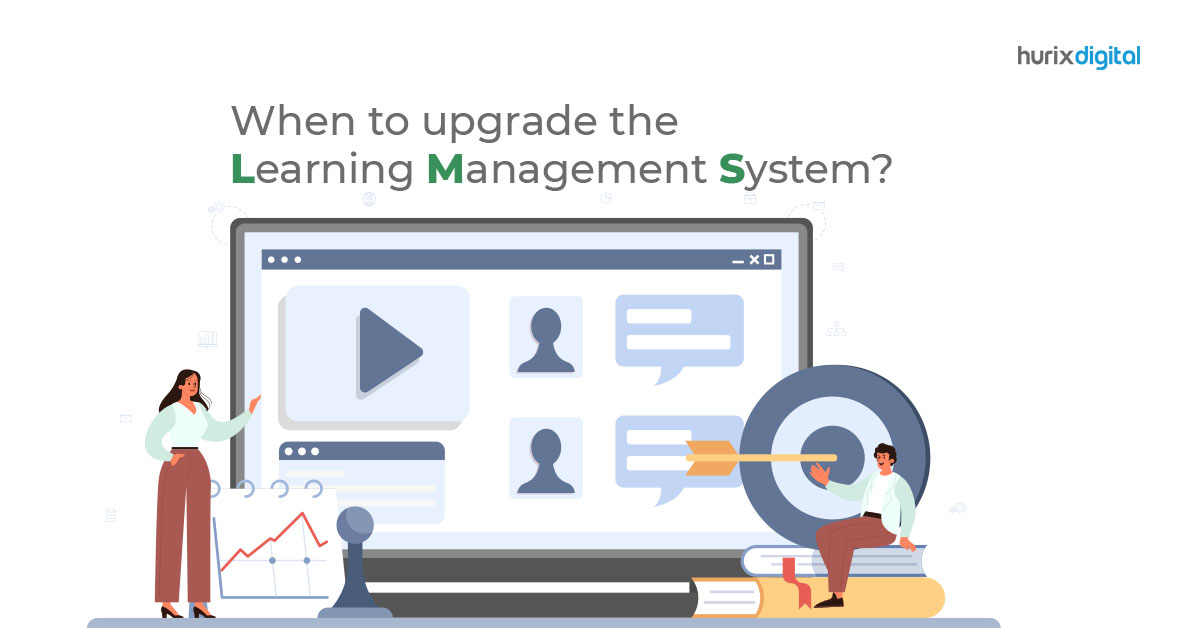
7 Learning Management Challenges and How Companies Can Address Them
Summarize with:
Introduction
Some organizations have attempted to take on learning management by hiring external trainers to conduct workshops. However, this approach cannot sustain continuous learning in a digitally dynamic world, and the world of work has changed drastically in the last two years.
More organizations are adopting remote and hybrid work models. Automation of repetitive tasks and AI-based solutions are being leveraged across industries. Smart online tools are helping scale many business functions, from sales to supply chain management.
These changes have led to immense change fatigue in workforces across the world. They have also left millions of employees to fend for themselves in the new business order. Without proper access to upskilling and knowledge transfer, many find themselves struggling to fulfill simple tasks.
Companies, in turn, are struggling with low productivity, causing them to lose the competitive edge they may have built in the pre-pandemic era.
Here’s a rundown of the top challenges when implementing an LMS today and how an efficient learning management system can proactively address them.
Table of Contents:
What are the Top 7 Learning Management Challenges?
From access to resources to flexibility and scalability, modern organizations face unique challenges in managing learning effectively. Here’s a breakdown of the top issues and how learning management systems can help address them.
1. Lack of Instant Access to a Knowledge Base
Today, consumers and clients have higher expectations. They tend to prioritize businesses with a quicker turnaround time. This means that the workforce must be able to respond to companies in the shortest period.
They do not have the luxury of waiting for their coaches to host the next training workshop. They need to find answers on their own.
Instead of sifting through their emails and other databases, having access to a centralized knowledge database and online learning resources can help them respond to clients or consumers in real-time.
By introducing a state-of-the-art learning management system, workforces have access to a wealth of online learning resources that can help them address a large range of queries within minutes.
Also Read: How LMS is Making Online Learning Easier Than Ever?
2. Learning Needs Flexibility and Convenience
Flexible learning options have a much higher impact on learning in academics and the workplace. Research indicates that workforces are more likely to invest in self-learning when they can learn at their own pace and schedules.
Secondly, they are more likely to learn when they can tune in via smartphones instead of sitting in a conference room.
Learning via mobile is a revolutionary mode of learning that is nudging more employees to learn from anywhere. Learning management systems are designed to enable learners to log in from anywhere and start learning.
3. Difficulty in Identifying Learning Needs
With teams becoming leaner, the productivity of every team member plays an important role in a company’s success. Even one unproductive member impacts outcomes and profitability.
While basic training can be designed for teams, team productivity rises when learning progress can be tracked and individual coaching needs are identified.
Tracking the learning trajectories of individual team members via online platforms such as learning management systems can help human resource teams design new training programs and curate online learning resources.
4. Remote Teams Have Unique LMS Challenges
Currently, many organizations are adopting remote work rather than the office approach, sometimes creating a more flexible work environment called hybrid.
Therefore, the traditional way of learning, where people congregated in the boardroom or traveled to a far-off place for a workshop, is no longer applicable.
Organizations must be prepared to build learning opportunities for geographically scattered workforces. Scaling learning for remote workforces is a problem that can be solved by a smart tool such as a learning management system, which makes it easy to onboard new learners from anywhere.
5. Lack of Measurability
It is critical to understand the effectiveness of learning programs and their relevance to employee performance and the organization’s goals.
However, traditional training methods usually lack tools or metrics for measuring the outcomes of learning achievements. This makes it impossible to know where to improve or show how beneficial training programs are.
Learning management systems (LMS) allow for effective performance tracking and measuring one’s learning goals. By incorporating data analytics, LMS systems offer more information about learners’ activities, degree of engagement, and achievements.
These metrics would enable organizations to forecast and assess the success of their learning initiatives and determine parts where trained employees need assistance or more training.
With these insights, organizations can strategize their learning initiatives, manage resources practically, and demonstrate the profitability of their employee training programs.
6. Learning Can Be Expensive
Traditional methods of training employees, such as classroom training led by instructors or attending external training workshops, are often expensive and time-consuming.
Engaging professional trainers, renting appropriate training facilities, and covering transport costs can strain an organization’s resources. This can be achieved through the incorporation of a Learning Management System (LMS), which helps organizations train efficiently and cut costs.
An LMS enables the development and presentation of online courses and training content, making physical classrooms unnecessary and minimizing the excess use of trainers from outside the organization.
Furthermore, LMS systems also offer advanced features such as conferencing, which helps minimize traveling expenses by allowing organizations to conduct online training.
7. Lack of Access to High-Quality Online Resources
Today’s learners expect a diverse and engaging learning experience. They crave a mix of learning modalities, such as videos, text content, interactive quizzes, and practical exercises.
However, many traditional LMS problems fail to provide such a rich learning experience. Limited access to high-quality online resources can hinder learner engagement and motivation.
To address this challenge, modern LMS platforms incorporate features that support a variety of content formats, including video, audio, and interactive simulations. By providing learners with access to high-quality, engaging content, organizations can foster a more dynamic and effective learning environment.
Also Read: What is a Learning Management System in Education? Ways to Use LMS in Education
In Conclusion
Adopting a learning management system can make the learning process cost-effective for businesses. It motivates workforces to keep upskilling, engage in self-learning, and inculcate a hunger to find solutions in the shortest turnaround time.
If your business wants to adopt a state-of-the-art learning management system, Hurix Digital can help you meet all your learning needs.
Feel free to reach out for a discussion on how we can assist you in achieving your learning goals.
Summarize with:

 A Space for Thoughtful
A Space for Thoughtful 



